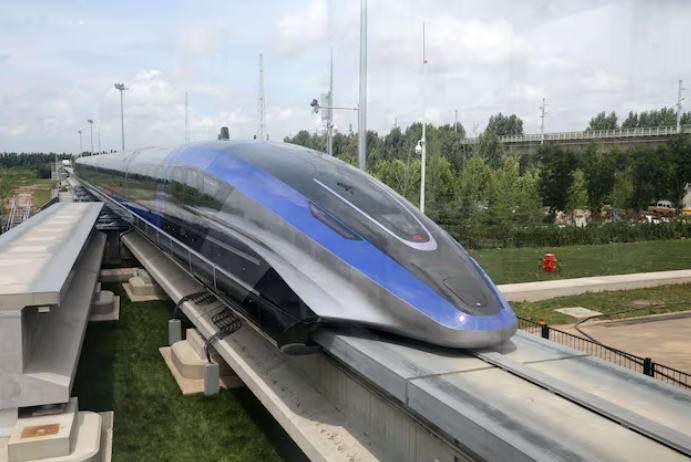A novel ultra-high-speed (UHS) maglev transportation system recently completed a demonstration test in north China’s Shanxi Province, marking another progress for the maglev train that can travel at speeds of up to 1,000 km per hour.
The UHS low-vacuum tube magnetic levitation transportation system, jointly developed by China Aerospace Science and Industry Corporation Limited and Shanxi, completed the demonstration test for its full-size trial project, the Science and Technology Daily has reported.
The test was conducted by a superconducting maglev vehicle in a 2-km-long pipeline with a low-vacuum environment. The results showed that the train achieved controlled navigation, stable suspension and safe stopping, in accordance with the predetermined curve, according to the report.
The test showed that the maximum speed and suspension height of the vehicle were consistent with the preset values. All systems operated normally, and the vehicle’s moving track closely matched the theoretical trajectory, said the report.
The test also verified the establishment and maintenance of a long-distance, large-scale vacuum environment, superconducting navigation control and other key technologies, as well as the coordination between various systems in a low-vacuum environment and the performance of the entire system.
Construction of the UHS maglev transportation system started in Yanggao County in April 2022. It integrates aerospace technology with ground railway transportation technology, aiming to achieve a train speed at 1,000 km per hour.
In the future, the system could be used for transportation between China’s megacity clusters, allowing for a journey from Beijing to Shanghai in about an hour and a half.


No comment